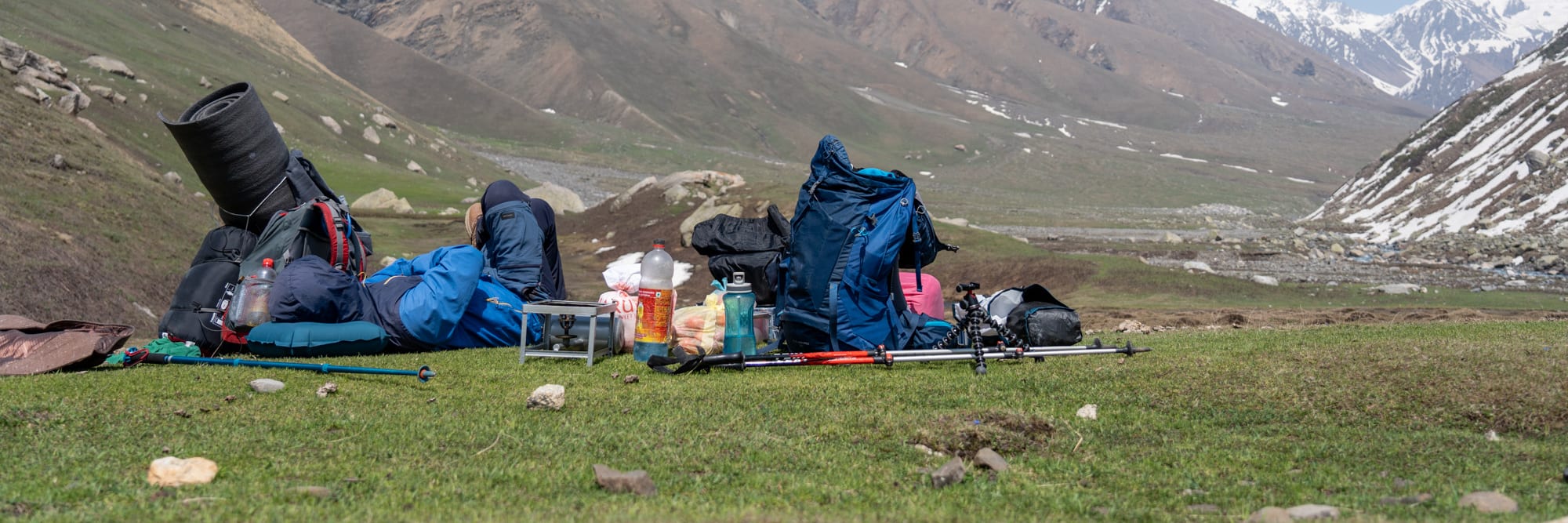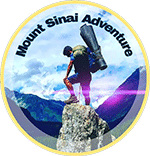
Packing list
List of things to carry on a trek
Below is a list of personal articles which are required for a trek in the Himalayas. This list helps you to have an overview of all the things that you need to bring for a trek. Depending upon the number of days of the trek, the articles quantity may vary. This list is made considering the trek duration being 5 to 7 days (one week trek). Always try to avoid unnecessary toiletries which are heavy and of little use on mountain. It is important to pack light that you are comfortable during trek.
Rain or snowfall is common and varies one trek to another in different seasons. Always wrap your clothing and non waterproof stuff inside waterproof bags inside your backpack. Do this even though you have a rain cover for you backpack.
Sleeping Bag
We are providing a sleeping bag, but if you want to bring your own one this is of course also fine. Just make sure your sleeping bag has a comfort zone rating of around 0°.Sleeping mat - We will provide, you don't need your own
Backpack
Between 20 to 60 liter.Backpack cover (waterproof)
Trekking Shoe/Boot
Must have, A good quality rubber sole shoe/boot with good sole and ankle support (Medium or high ankle). Wear the shoos for at least some days before trekking. Otherwise you may get sores/blisters during your trek.Note: Sports shoes are NOT recommended for treks. For relatively low altitude easy treks you may wear then but only after consulting us.
2 T-shirts (Base layer while you are hiking)
A Good base layer that drys fast and ventilates sweat/moisture is recommended. Use synthetic materials. Don't use cotton, because it wont provide warmth when wet and drys slowly.Warm Jacket (Mid layer clothing for warmth)
Warm fleece jacket (synthetic, non cotton) or filled jacked (down jacket). Depending on season it is recommended to take both, fleece jacket and an other filled jacket (down jacket).Wind and waterproof jacked (Outer layer to protect from weather)
Use either a windproof jacked and a poncho for rain protection or just a good raincoat for wind and rain protection.Trek pant
Use a good trek pant, that is lightweight and drys fast.Cap for warmth
Optinal, but can be very convenient. Specially in the evening time it can get cold or higher up it can be very windy. So its important that you can cover your ears with something that provides your warmth.Sun cap
Not necessary, but recommended because of the strong sunlight.Underwear
2-3 pair of underwear.Hiking Socks
2-3 pair of full length socks. Cotton is not recommended because they get cold when they are wet and dry slowly.Thin gloves
Optional, but it's convenient for the evening, because it can get cold.Waterproof warm gloves
Only needed when going in colder season.Walking Sticks
1 or 2 walking sticks are nice to have and reduce the pressure on the knees and provide balance.Water bottle
In total a capacity of 2 liters is needed.Sunglasses
Very important. In high altitude the sun is much stronger as in normal areas and together with snow it es necessary to protect your eyes from the sun.Head Lamp
If possible not a hand torch. Also carry some extra batteries.Spoon
Take your own spoon for eating rice, noodles or soup.Sunscreen lotion
Recommended for most people, because the sun can be very strong in the mountains.Toothbrush and paste
Only carry a small toothpaste tube.Soap or wipes
Optional, but its nice to be able to clean himself during a trek.Dry food items
Optional. Carry some food items you like and that are energy-dense. Its always good to have some food you like with you for metal encouragement.Medicine Kit
We provide an emergency kit. You don't need to bring your own one. If you have special medical issues, you have to bring your own medicine and let us know about that.Tent
Mount Sinai Adventure will provide the tents. But if you want you can of course also bring your own one.
